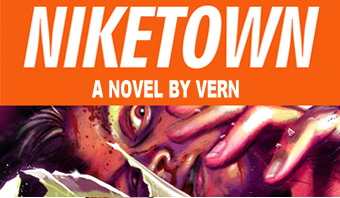 We interrupt this Sam Raimi series so I can have a semi-timely review of the new SCREAM movie.
We interrupt this Sam Raimi series so I can have a semi-timely review of the new SCREAM movie.
I have some bad news. SCREAM – a teen horror movie that came out when I was older than a teen but I enjoyed it along with the younger people anyway – is 25 fucking years old! And you remember how it was a trilogy and we assumed that was it, but a little while back kind of out of the blue they made a way late part 4? Well, I’m sorry to say that even that happened eleven god damn years ago. How is that possible? It’s not. But it happened. We are old, my friends. Very, very old.
But some of us still like SCREAM and the i.p. gods or whoever decided that the time has come for another one in another era. Many things have changed since the last one. Obviously horror has changed, as it always does. But more importantly the director of the original four, Wes Craven, has passed away, and (in better news) the Weinstein Company has died and gone to Hell, so this is the first time the series has been continued by a new set of people. The rights were picked up by Spyglass Media Group, James Vanderbilt (THE RUNDOWN, ZODIAC) & Guy Busick (READY OR NOT, Castle Rock) wrote the script, and Matt Bettinelli-Olpin & Tyler Gillett (the team behind READY OR NOT) directed it, in the Craven spirit but not trying to be a throwback or anything. (There’s even a joke about overlit ‘90s movies.) Original writer Kevin Williamson did give his blessing and sign on as executive producer, and has given many interviews (such as on Mick Garris’ podcast Post-Mortem) verifying that he really was involved and is excited about the movie. (read the rest of this shit…)

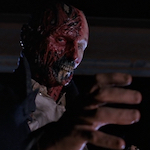 After his horror breakthrough, his failed comedy, and his knockout horror sequel, Sam Raimi finally made it to the semi-big-time. He’d really wanted to do a movie of Batman or The Shadow, but could never get the rights. Then he came up with the idea for his own dark avenger, one with the ability to change his face. His 40-page treatment The Darkman was greenlit by Universal Studios in 1987.
After his horror breakthrough, his failed comedy, and his knockout horror sequel, Sam Raimi finally made it to the semi-big-time. He’d really wanted to do a movie of Batman or The Shadow, but could never get the rights. Then he came up with the idea for his own dark avenger, one with the ability to change his face. His 40-page treatment The Darkman was greenlit by Universal Studios in 1987.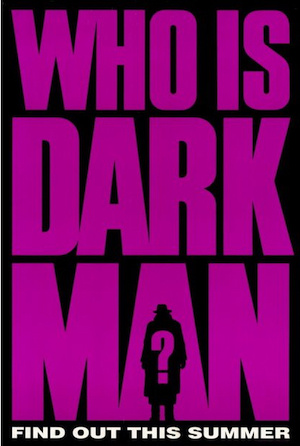 Raimi brought in
Raimi brought in  “Then let’s head down into that cellar and carve ourselves a witch.”
“Then let’s head down into that cellar and carve ourselves a witch.”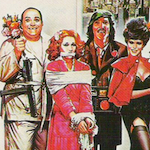 THE EVIL DEAD was a hit. It took them a while, but they found a distributor, Irvin Shapiro. He’d been a founder of the Cannes Film Festival, and arranged for it to screen out of competition, where Stephen King saw it and loved it. Him raving about it in USA Today brought it outsized attention for such a small movie. It was well reviewed and became a sleeper hit, making 8 times its budget at the domestic box office (and then we all saw it on video).
THE EVIL DEAD was a hit. It took them a while, but they found a distributor, Irvin Shapiro. He’d been a founder of the Cannes Film Festival, and arranged for it to screen out of competition, where Stephen King saw it and loved it. Him raving about it in USA Today brought it outsized attention for such a small movie. It was well reviewed and became a sleeper hit, making 8 times its budget at the domestic box office (and then we all saw it on video). Raimi and Coen personality, from the precisely worded dialogue full of humorously archaic phrasing, to the over-the-top set pieces, to the straight up Three Stooges cartooniness. A favorite example of the latter: during a struggle, a shelf gets knocked down and a series of bowling balls (or cannonballs?) roll onto a villain’s head one after the other – don’t keep those on a shelf, people! That’s dangerous!
Raimi and Coen personality, from the precisely worded dialogue full of humorously archaic phrasing, to the over-the-top set pieces, to the straight up Three Stooges cartooniness. A favorite example of the latter: during a struggle, a shelf gets knocked down and a series of bowling balls (or cannonballs?) roll onto a villain’s head one after the other – don’t keep those on a shelf, people! That’s dangerous!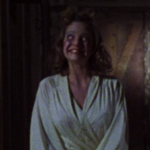 Welcome friends, to a new review series. Each year on Halloween I like to post a piece on an all-time classic horror movie, usually one that I’ve been intimidated to tackle because so much has already been said about it that it’s hard to find a fresh angle. A couple Halloweens ago I decided to tackle Sam Raimi’s 1981 low budget classic THE EVIL DEAD. And I was really proud of the appreciation I put together, but writing it got me so excited about Raimi that I got a little ambitious. I decided I should do a separate one on the even better EVIL DEAD II. But watching that again got me thinking about other early Raimi movies, so I held off posting to grow it into a mini-series. And then I decided fuck it, I should do every movie he’s directed, even ones I’ve already reviewed.
Welcome friends, to a new review series. Each year on Halloween I like to post a piece on an all-time classic horror movie, usually one that I’ve been intimidated to tackle because so much has already been said about it that it’s hard to find a fresh angle. A couple Halloweens ago I decided to tackle Sam Raimi’s 1981 low budget classic THE EVIL DEAD. And I was really proud of the appreciation I put together, but writing it got me so excited about Raimi that I got a little ambitious. I decided I should do a separate one on the even better EVIL DEAD II. But watching that again got me thinking about other early Raimi movies, so I held off posting to grow it into a mini-series. And then I decided fuck it, I should do every movie he’s directed, even ones I’ve already reviewed. Twenty years ago when I was an enthusiastic but not that good internet movie reviewer I wrote a column called
Twenty years ago when I was an enthusiastic but not that good internet movie reviewer I wrote a column called 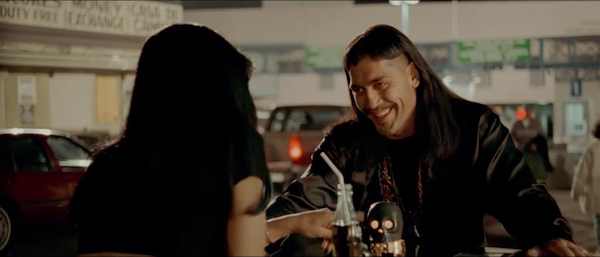
 BEING THE RICARDOS is a straight-to-Amazon movie, the latest from playwright turned TV show creator turned screenwriter turned director Aaron Sorkin. It tells the story of one week in the lives of ‘50s sitcom icons Lucille Ball and Desi Arnaz, when a radio show had reported on Ball registering to vote as a communist in 1936, and they went ahead preparing an episode of I Love Lucy thinking their careers might be over.
BEING THE RICARDOS is a straight-to-Amazon movie, the latest from playwright turned TV show creator turned screenwriter turned director Aaron Sorkin. It tells the story of one week in the lives of ‘50s sitcom icons Lucille Ball and Desi Arnaz, when a radio show had reported on Ball registering to vote as a communist in 1936, and they went ahead preparing an episode of I Love Lucy thinking their careers might be over. I had been pretty excited for SNAKE EYES: G.I. JOE ORIGINS, but I was skeptical about director Robert Schwentke (
I had been pretty excited for SNAKE EYES: G.I. JOE ORIGINS, but I was skeptical about director Robert Schwentke (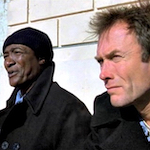 On January 1, 2013 I reviewed the movie
On January 1, 2013 I reviewed the movie  “I’m sorry. How could I know this would happen?”
“I’m sorry. How could I know this would happen?”

